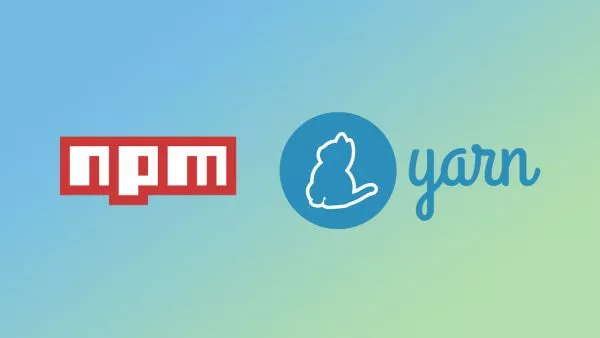- What is gRPC?
- Key Features of gRPC
- How gRPC Works
- Example: Implementing gRPC
- Running the Example
- Benefits of Using gRPC
- Conclusion
In the realm of modern software development, particularly with the rise of microservices, efficient communication between services has become crucial. gRPC, an open-source framework developed by Google, is designed to meet this need by providing a high-performance, language-agnostic communication protocol. In this article, we’ll dive into what gRPC is, its benefits, how it works, and how to implement it in your applications.
What is gRPC?
gRPC (gRPC Remote Procedure Calls) is a modern, open-source remote procedure call (RPC) framework that can run in any environment. It uses HTTP/2 for transport, Protocol Buffers (Protobuf) as the interface description language, and provides features such as authentication, load balancing, and more.
Key Features of gRPC
- Language Agnostic: gRPC supports multiple programming languages including C++, Java, Python, Go, Ruby, and more, allowing seamless communication between services written in different languages.
- High Performance: Leveraging HTTP/2, gRPC provides efficient communication with multiplexing and binary framing, leading to reduced latency and improved throughput.
- Streamlined Service Definitions: Using Protocol Buffers (Protobuf), gRPC enables the definition of services and message types in a simple, language-neutral syntax.
- Bi-Directional Streaming: gRPC supports different types of streaming: unary (single request-response), server streaming, client streaming, and bidirectional streaming.
- Built-in Authentication: gRPC includes support for various authentication mechanisms, such as SSL/TLS and token-based authentication.
How gRPC Works
gRPC uses Protocol Buffers (Protobuf) for defining the structure of the data and the services. Here’s a simplified workflow of how gRPC works:
-
Define Service and Messages: Define your service and its methods, along with the message types, in a
.protofile using Protobuf syntax. -
Generate Code: Use the Protocol Buffers compiler (
protoc) to generate client and server code in your preferred programming languages. - Implement Service: Implement the service logic on the server side.
- Client Calls: Use the generated client code to call the service methods from the client application.
Example: Implementing gRPC
Let’s walk through a simple example of implementing a gRPC service in Python.
Step 1: Define the Service and Messages
Create a file named helloworld.proto:
syntax = "proto3";
package helloworld;
// The greeting service definition.
service Greeter {
// Sends a greeting
rpc SayHello (HelloRequest) returns (HelloReply) {}
}
// The request message containing the user's name.
message HelloRequest {
string name = 1;
}
// The response message containing the greetings
message HelloReply {
string message = 1;
}
Step 2: Generate the Code
Use the Protocol Buffers compiler to generate the Python code from the .proto file:
protoc -I=. --python_out=. --grpc_python_out=. helloworld.proto
Step 3: Implement the Server
Create a Python file named server.py:
from concurrent import futures
import grpc
import helloworld_pb2
import helloworld_pb2_grpc
class Greeter(helloworld_pb2_grpc.GreeterServicer):
def SayHello(self, request, context):
return helloworld_pb2.HelloReply(message='Hello, {}'.format(request.name))
def serve():
server = grpc.server(futures.ThreadPoolExecutor(max_workers=10))
helloworld_pb2_grpc.add_GreeterServicer_to_server(Greeter(), server)
server.add_insecure_port('[::]:50051')
server.start()
server.wait_for_termination()
if __name__ == '__main__':
serve()
Step 4: Implement the Client
Create a Python file named client.py:
import grpc
import helloworld_pb2
import helloworld_pb2_grpc
def run():
with grpc.insecure_channel('localhost:50051') as channel:
stub = helloworld_pb2_grpc.GreeterStub(channel)
response = stub.SayHello(helloworld_pb2.HelloRequest(name='World'))
print('Greeter client received: ' + response.message)
if __name__ == '__main__':
run()
Running the Example
-
Start the Server: Run the
server.pyscript to start the gRPC server.python server.py -
Run the Client: Run the
client.pyscript to call theSayHellomethod on the gRPC server.python client.py
You should see the following output from the client:
Greeter client received: Hello, World
Benefits of Using gRPC
- Efficiency: gRPC's use of HTTP/2 and Protobuf leads to efficient communication with lower latency and higher throughput compared to traditional REST APIs.
- Flexibility: With support for multiple languages and various communication patterns (unary, streaming), gRPC can handle a wide range of use cases.
- Scalability: Built-in support for load balancing and service discovery makes gRPC suitable for large-scale, microservices-based architectures.
- Strong Typing: Protobuf enforces a strict schema, ensuring data consistency and reducing errors.
Conclusion
gRPC is a powerful tool for building efficient, scalable, and robust microservices. By providing a modern, high-performance RPC framework, gRPC simplifies the development of distributed systems and improves the interoperability between different services. Whether you're building a small application or a large-scale system, gRPC offers the tools and capabilities needed to streamline communication and enhance performance.
Related articles
Tutorials WordPress Database Design Tooling
How to store and output currency values in WordPress
Effectively manage currency values in WordPress, from storage best practices to displaying currency amounts on your website. This guide covers everything to ensure accurate and user-friendly currency handling in WordPress.


